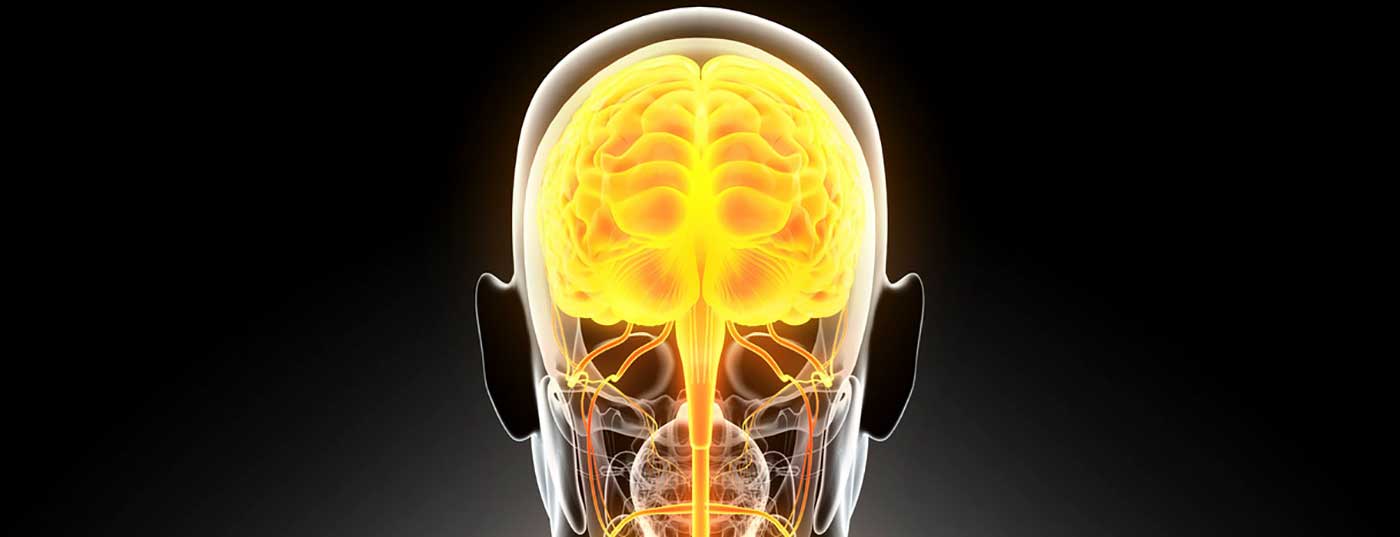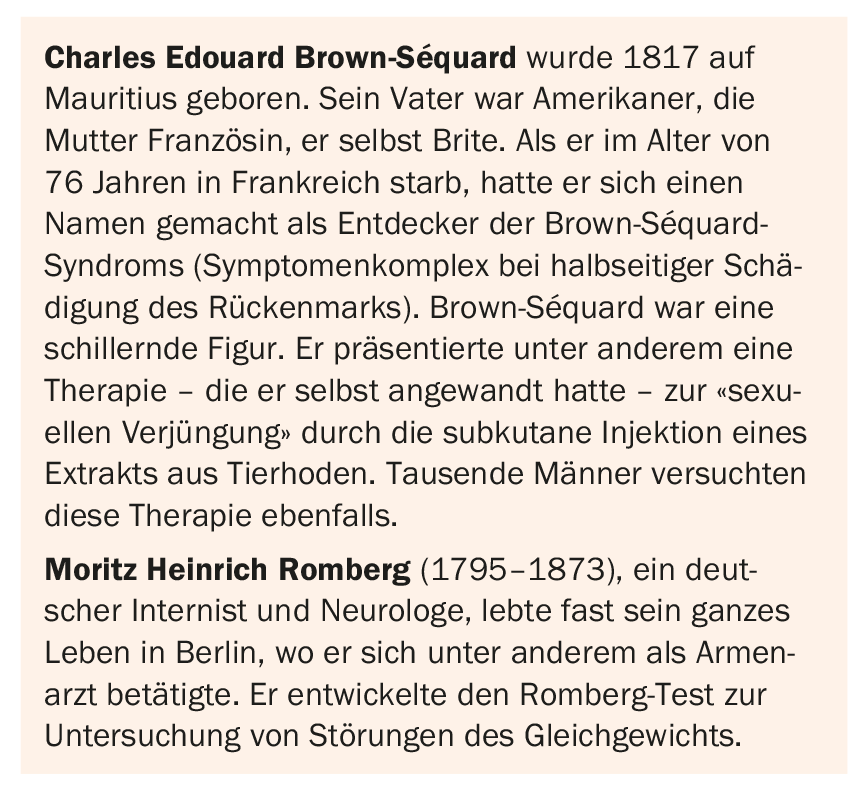What is the role of biomarkers in Alzheimer’s disease? And how can insights into the pathogenesis of migraine improve its treatment? These two questions were discussed at a Presidential Symposium during EAN 2018 in Lisbon.
In the symposium, whose individual lectures were named after famous neurologists, two international experts conveyed the latest developments on Alzheimer’s disease and migraine.
Edouard Brown-Séquard Lecture – Alzheimer’s disease
Prof. Dr. Philip Scheltens, Alzheimer Center Amsterdam, The Netherlands, provided information on the importance of biomarkers in the diagnosis and research of Alzheimer’s disease (AD). In 1984, AD was a diagnosis of exclusion that could only be secured post mortem. Today, biomarkers such as imaging, beta-amyloid, T-tau and P-tau-181, etc., are part of the diagnosis (see box “Clinical-biological concept of Alzheimer’s disease”) [1,2]. The development of biomarkers has changed the perception of AD and allows, among other things, to distinguish subtypes of AD. The National Institute on Aging and Alzheimer’s Association (NIA-AA) published updated findings on biomarker diagnostics as recently as April of this year [3]. They state, among other things, that AD cannot be present in the absence of amyloids and that the amount of tau deposits correlates with clinical presentation.
Biomarkers also have practical value, as demonstrated in the study by Duits et al. showed [4]. In a memory clinic in Amsterdam, lumbar puncture was performed in 80% of 438 patients included in the study. Determination of biomarkers in CSF led to a change in diagnosis in 7% of patients, certainty in diagnosis increased from 84% to 89%, and disease management was altered in 13% of patients as a result of biomarker determination. Imaging has also become very important in AD diagnosis [5]. In the current ABIDE study, a PET scan was performed in approximately 500 patients screened at the Amsterdam Alzheimer Center [6]. In one-quarter to one-third of patients (depending on the presenting syndrome and etiology), the diagnosis changed after the PET scan, and in 24%, the PET scan led to a change in disease management (further investigations, change in medication, participation in a study, etc.). A similar study (IDEAS) is currently underway in the U.S. with approximately 18,000 patients; results are expected in July 2019.
Biomarkers can also help to better assess individual patient risk and prognosis. In van Maurik’s study, the inclusion of various biomarker values allowed us to determine the risk of patients with Subjective Cognitive Declines developing AD within one or three years [7]. This risk is clearly dependent on biomarkers such as the extent of brain atrophy, beta-amyloid, or tau levels. The authors of the studies have used the results to develop an app (“Adappt”) that will allow practitioners to quickly determine individual risk for each patient; a prototype of the app is already in use.
The speaker emphasized that a lot of work still needs to be done regarding biomarkers. “An important goal is that we can also use biomarkers to improve early diagnosis,” he said. “This should be possible, because the formation of amyloids precedes the symptomatology in AD by decades.” This time could be used for preventive measures. Another area of application for biomarkers is drug development. “Here, after the last ten years in which nothing was achieved, we absolutely have to do better,” appealed Prof. Scheltens.
Moritz Romberg Lecture – Migraine
Prof. Jes Olesen, MD, Rigshospitalet Glostrup, Denmark, spoke about new insights into the pathogenesis of migraine and new therapeutic targets. Migraine is the second most common incapacitating illness in the world, according to the WHO. Most frequently affected are persons between the 20th and 50th year of life – in this age group migraine is even the most important invalidating disease (before back pain and depression). In the age group mentioned, about 25% of all women and 10% of men suffer from migraine. “Unfortunately, there are still no biomarkers for migraine,” the speaker lamented, “and even in neurological imaging, everything looks normal in migraine patients.” These factors complicate migraine research and new drug development.
A hereditary etiology is present in approximately 30-57% of patients with migraine with aura. In line with this, the risk for siblings of migraine patients to suffer from migraine with aura themselves is 3.8 times higher than in the general population. To date, research has found 42 gene loci associated with the development of migraine. These Loki provide insight into the pathogenesis of migraine symptoms: Five of the 42 Loki are related to ion homeostasis, nine to oxidative stress and NO signaling pathways, and nine others to vascular disease. “Whether a migraine has a hereditary background or not is also associated with drug efficacy,” Prof. Olesen reported. Most migraine medications – whether used prophylactically or for acute attacks – work better in patients with hereditary migraine.
Hypoperfusion during a migraine attack spreads across the cortex at a rate of 2-3 mm/min. If this spread could be suppressed, fewer migraine attacks would occur. Inhibition of NO is an effective means of doing this, as shown by experimental studies. Unfortunately, however, there are still no drugs that can effectively suppress the production of NO in the brain. Another therapeutic approach is inhibition of beta-CGRP, a potent vasodilator peptide in the brain. In 2004, an antagonist to CGRP was developed that showed a response rate of up to 80% within two hours at doses ranging from 2.5 to 10 mg, but no such drug was ever marketed. Several monoclonal antibodies are currently in development: one is already on the market in the U.S. and is expected to be approved in Europe within the next year.
Source: 4th Congress of the European Academy of Neurology (EAN), June 16-19, 2018, Lisbon, Portugal.
Literature:
- Dubois B, et al: Research criteria for the diagnosis of Alzheimer’s disease: revising the NINCDS-ADRDA criteria. Lancet Neurol 2007; 6(8): 734-746.
- Dubois B, et al: Advancing research diagnostic criteria for Alzheimer’s disease: the IWG-2 criteria. Lancet Neurol 2014; 13(6): 614-629.
- Jack CR, et al: NIA-AA Research Framework: Toward a biological definition of Alzheimer’s disease. Alzheimers Dement 2018 Apr; 14(4): 535-562. doi: 10.1016/j.jalz.2018.02.018.
- Duits FH, et al: Diagnostic impact of CSF biomarkers for Alzheimer’s disease in a tertiary memory clinic. Alzheimers Dement 2015; 11(5): 523-532.
- Morbelli S, et al.: Imaging biomarkers in Alzheimer’s
- disease: added value in the clinical setting. Q J Nucl Med Mol Imaging 2017 Dec; 61(4): 360-371.
- de Wilde A, et al: Association of Amyloid Positron Emission Tomography With Changes in Diagnosis and Patient Treatment in an Unselected Memory Clinic Cohort: The ABIDE Project. JAMA Neurol 2018 Jun 11. doi: 10.1001/jamaneurol.2018.1346. [Epub ahead of print]
- van Maurik IS, et al: Interpreting Biomarker Results in Individual Patients With Mild Cognitive Impairment in the Alzheimer’s Biomarkers in Daily Practice (ABIDE) Project. JAMA Neurol 2017 Dec 1; 74(12): 1481-1491.
InFo NEUROLOGY & PSYCHIATRY 2018; 16(5): 49-50.












